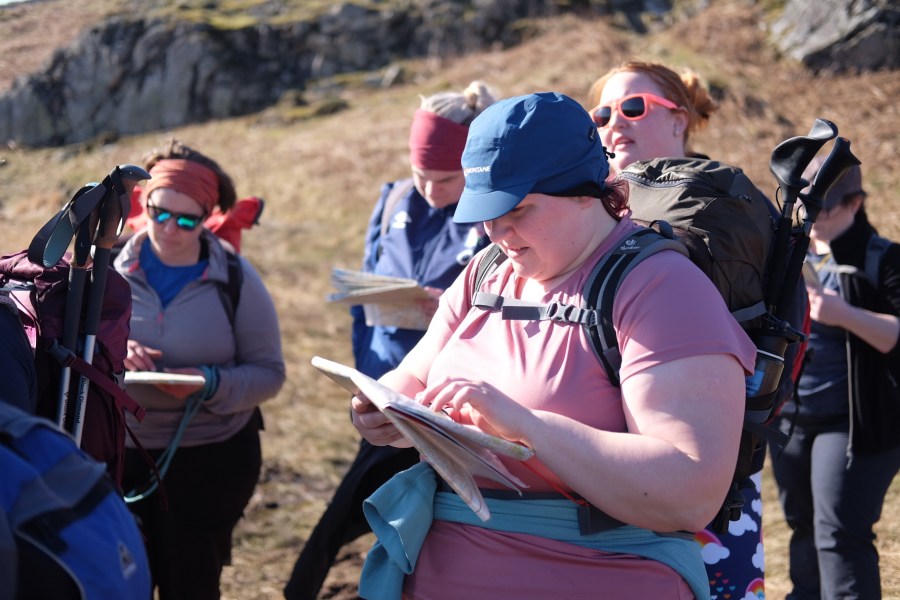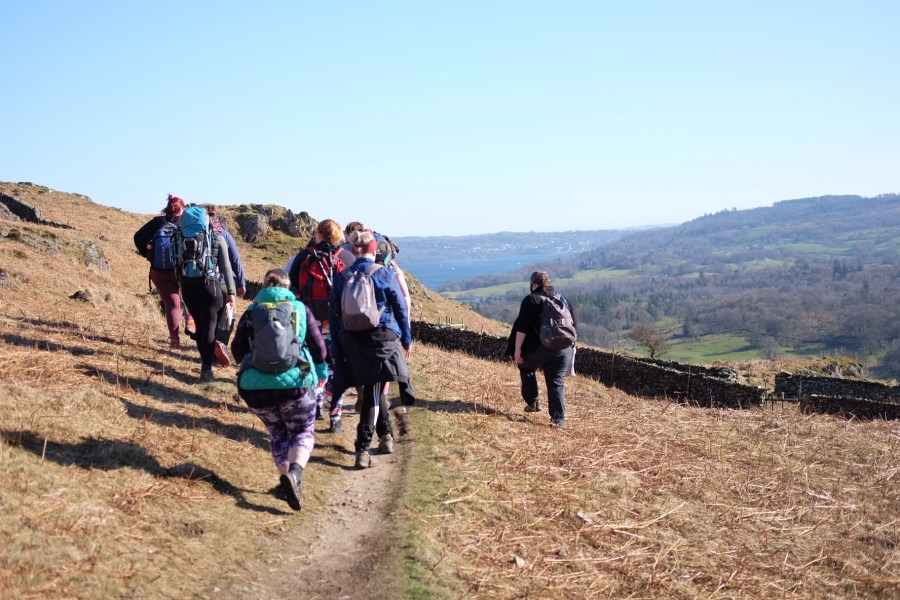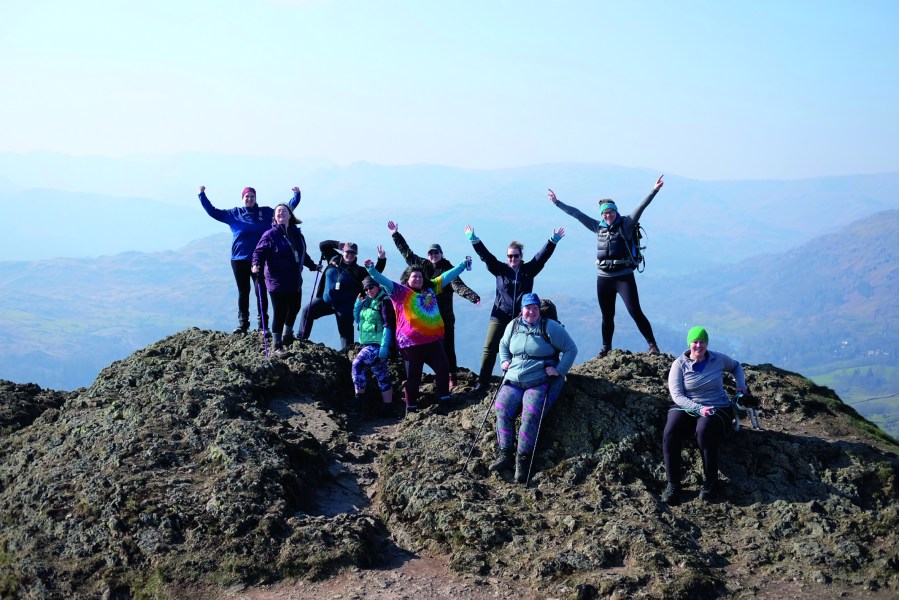People with plus-size bodies have to limit their outdoor ambition because of a lack of suitable clothing. That needs to change, says Mary-Ann Ochota.
A generation ago it was difficult to find outdoor clothing for women. They dreamed of jackets that didn’t have arms so long they flapped in the wind, for clothing designed for bodies with boobs and curving hips.
When women’s kit did start to slowly – glacially – emerge from design studios and into outdoors shops, it was pink. Maybe sometimes just a subtle flower detail. Why? Perhaps to reassure that even if you’re sweating up your fifth Wainwright of the day you can still be ‘pretty’?! There definitely weren’t any map pockets in unflattering (read: useful) places. Equipment suppliers were even slower to acknowledge the variety of body shapes. I own rucksacks where I can’t do up the chest strap because I have boobs ‘in the way’.
Words: Mary-Ann Ochota | Main image: Steph Wetherell
Nowadays the issues for women’s kit are a little more nuanced. Yes, the clothing’s in the store, and not all of it is fuchsia, blush or berry. But most still feels designed for only one kind of body shape – a long, lean woman with small breasts, just the hint of a waist and definitely no big buns or chafing thighs.
Part of the problem is grading – the principle of clothing design where a small standard size, say an 8, is used as the baseline set of measurements, and each incremental size up or down has a given number of inches added on or taken away from key measurements. So from an 8 to a 10, add two inches to waist, two to hips, half an inch to the circumference of the lower trouser leg. But that’s not really how human bodies work. Someone who’s a size 14 may have a hip measurement four inches larger than their friend who’s a size 10. But their waist measurement might not follow that same pattern and ought to have a different grading ratio.

Plus-size women on a hiking and navigation course organised by Steph Wetherell. Credit: Steph Wetherell
The further you get from the baseline size, the more surreal the measurements become. I’ll bet money that the size 18 hiker doesn’t have ankles multiple inches wider than their friend. Put those flares – sorry – hiking trousers on and you’ll feel ready for Saturday Night Fever. I tripped over the other day when my size 16 overly wide trouser legs got wet and started sagging and flapping around my boots.
But at least I can find a pair of (albeit flappy) trousers and a hardshell waterproof that I can squeeze my cleavage into. If you wear a UK women’s size 22 or above, or a men’s 39” waist or larger, well, best of luck. Cos that’s all you’re getting. Skip the adverts in this mag and the shops in Keswick / Llanberis / Aviemore. You’ll have to head into the hills with a pac-a-mac from the high street hoping it doesn’t rain too much.
The paucity of clothing and equipment for plus-sized bodies is unwelcoming. It forces plus-size walkers to limit their ambition, and it compromises safety – a set of functioning waterproofs is basic gear when you’re in the UK hills. It makes people feel like they don’t belong, that they don’t have permission to be in the hills. If people do want to be active to improve their health, the lack of kit inhibits them. That’s wrong.

Every body Outdoors is giving overlooked people a voice. Credit: Steph Wetherell
Despite the challenges, the demand is there. Community group Every Body Outdoors (EBO) racked up a thousand followers on its first day on Instagram. They’re campaigning for better representation of plus-size folk in outdoor magazines, social media and advertising. They have invited brands to work with them to improve size ranges, grading and fit, to understand what it’s like to inhabit a body that is marginalised and often demonised.
Brands need to demonstrate their values. I want to see diversity in their ambassador teams, diversity in their advertising, diversity in the senior staff who run the place. I want to see them engaging and learning from groups like EBO – experienced, skilled outdoors people with important insight into what needs to change.
So, an appeal to brands: do better. I know you can’t change your product lines overnight, but you need to put your money where your mouths are: actually invest in design, development and production of larger size ranges; improve grading; sort out your size charts, your models and your ambassador rosters. Otherwise your talk of ambitious inclusion are hot air on the hillside. And let’s be honest, there’s money to be made here. Plus-size people are desperate to spend cash on good kit. You just need to make the darn stuff.
There’s no space for sizeism in our outdoors. Go big or go home.
Mary-Ann is a broadcaster, anthropologist and keen hillwalker. She’s the hillwalking ambassador for the British Mountaineering Council, a trustee for the John Muir Trust and a fellow of the Royal Geographical Society. These are her personal opinions. Find her on Instagram and Twitter @MaryAnnOchota.







